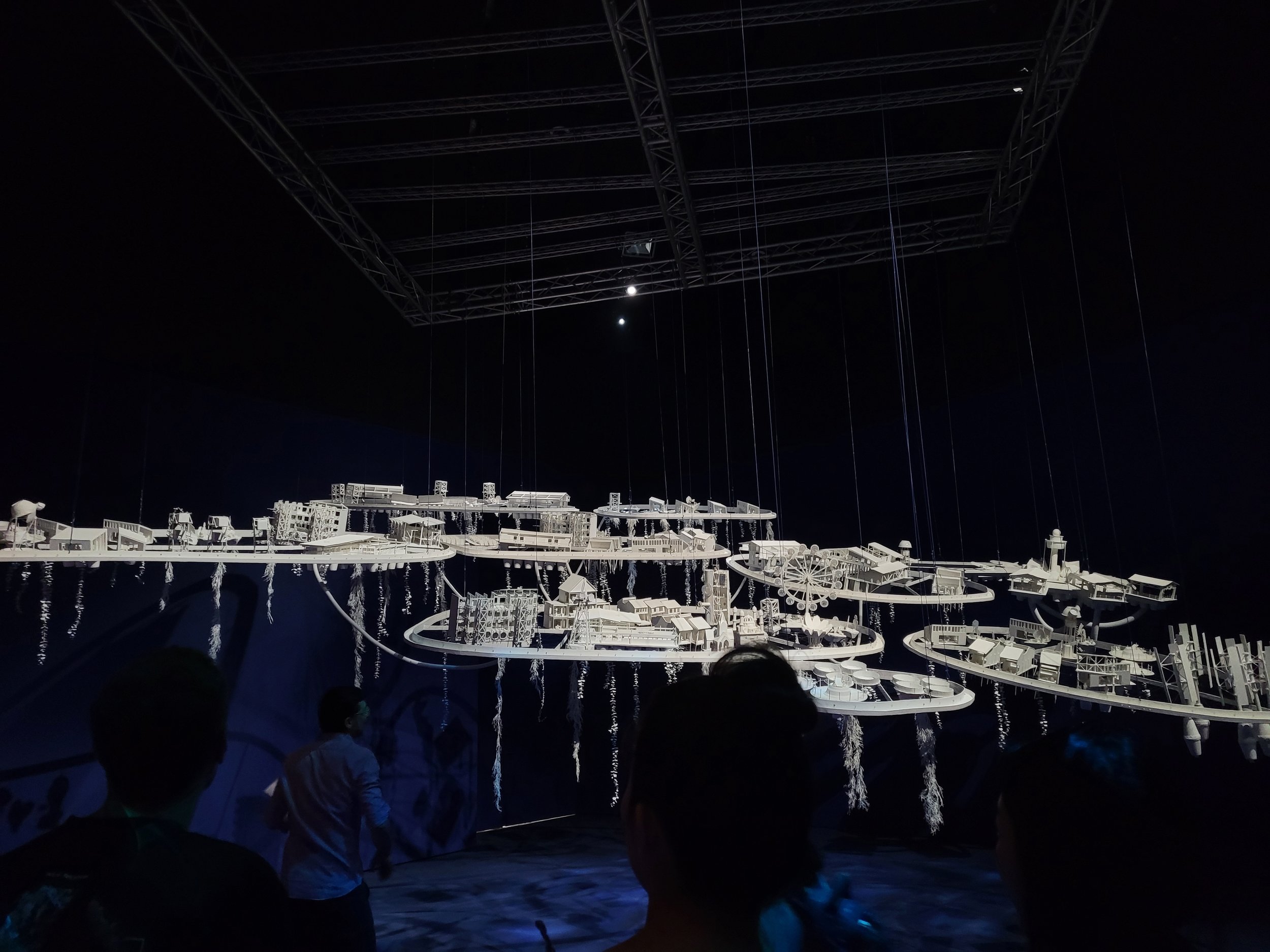
Cesar Jung-Harada: An Ocean City Imagined
ted
September 2024
It felt like we were stepping into the future when we walked into Cesar Jung-Harada: An Ocean City Imagined. Greeted by a mysterious transparent box with silver foil balloons, a floating expansive model of a city, and an ocean train (what is that you may ask), we were quickly immersed in an alternative reality – one that challenges our notions of what it means to be hopeful, inventive and sustainable in our current climate landscape.
Cesar Jung-Harada – Art & Science Practitioner, Ocean Innovator
Last year at TEDxSingapore: The Spaces Between, Cesar spoke about his dreams of building an ocean station. If we can have an international space station, why can’t we have international ocean stations? This was a dream he forged together with coastal communities in Bali, and every time we reconnect with Cesar, he comes closer to fulfilling this community dream.
As ArtScience Museum’s inaugural ArtScientist-in-Residence, Cesar recently launched his exhibition titled Cesar Jung-Harada: An Ocean City Imagined on the very day of our TEDxAdventures, which is a physical manifestation of the incredible ideas he spoke about last year.
Maximising what we already have to solve pressing problems
We all know by now how unsustainable and finite fossil fuels are – but what if we were told that all around us already exists a much more abundant and sustainable source of energy? That’s exactly what Cesar is trying to bring awareness to with his Ocean Solar Hydrogen project – a modular floating unit which converts the hydrogen in seawater to energy through water electrolysis powered by solar generated electricity. This floating unit can be placed near sea communities, which brings us closer to a more decentralised form of place-based energy harnessing, saving costs on energy transport.
Cesar’s ocean train project started out as a solution to cleaning up oil spills, but has evolved to become something larger – what if we can make sea trading more energy efficient? Based on Cesar’s research on the Deepwater Horizon oil spill in the Gulf of Mexico, he developed wind-powered robots. These ocean robots, with their wind-harnessing capabilities, then became a starting point for Cesar’s ocean train project, which essentially co-opts the energy-efficient principles of freight trains. This could potentially change conventional modes of sea cargo transport – from inefficient large cargo ships, to more modular and efficient ocean trains.
Cesar’s projects are testament to the potential of mobilising the community to solve wicked problems like the climate crisis. Through public engagement programmes at the ArtScience Museum, Cesar managed to gain new inspiration from children’s ideas. Kids as young as ten were involved in the weaving of string to form the base of the ocean train.
The large-scale installation of International Ocean Station — a speculative blueprint of a floating ocean city, also features houses which have design influences from the Kristang community. The Kristang are an indigenous ethnic group of people of primarily Portuguese and Malay descent, who were once a seafaring community. Their traditional houses were built on stilts, as a way of navigating the fluctuations in sea level. This simple design concept can be incorporated in our strategy of grappling with rising sea levels – which could be 1.37m by 2150.
Mobilising ideas from the community
Cesar’s exhibition was futuristic yes, but couldn’t be more relevant or timely. His work is so purpose- and community-driven, and reminds us of the importance of not only thinking scientifically but thinking socially; how can we cultivate eco citizenship, so that our community feels a sense of collective agency and responsibility when it comes to facing the climate crisis.
Watch Cesar’s talk at The Spaces Between 2023 here: https://youtu.be/uT4-vL3-4kk?si=kf9EJ_FTX1KQZCuD




